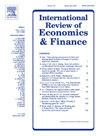数字化转型、供应链协作和企业创新边界
IF 5.6
2区 经济学
Q1 BUSINESS, FINANCE
引用次数: 0
摘要
随着数字经济的快速发展和技术范式的不断变化,企业如何利用数字化转型有效地扩展其创新边界已成为战略管理和创新研究的一个关键话题。本文利用2009 - 2022年中国上市公司面板数据,系统考察了数字化转型对企业创新边界的影响,并通过供应链协同视角识别了其潜在的传导机制。实证研究结果揭示了三个主要见解。首先,数字化转型通过增强企业技术组合的跨领域范围,显著拓宽了企业的创新边界。该结果在多个模型规格和灵敏度检查中仍然是稳健的。其次,供应链集中度发挥了关键的中介作用,因为数字化转型通过加强企业与关键客户和供应商的协作联系,间接推动了创新边界的扩展。第三,异质性分析表明,这一效应在中小企业、技术密集型企业、制造业企业和东部地区企业中更为明显。本研究扩展了数字化转型与创新的分析框架,强调了供应链结构作为关键传播渠道的重要性,为文献做出了贡献。丰富了对数字时代知识协调与组织边界重构的理论认识。研究结果对促进企业数字化升级、加强产业链协同创新、优化区域数字化政策设计具有重要意义。本文章由计算机程序翻译,如有差异,请以英文原文为准。
Digital transformation, supply chain collaboration, and corporate innovation boundaries
Amid the rapid evolution of the digital economy and ongoing shifts in technological paradigms, how firms leverage digital transformation to effectively expand their innovation boundaries has become a key topic in strategic management and innovation research. Using panel data of listed firms in China from 2009 to 2022, this study systematically investigates the impact of digital transformation on firms' innovation boundaries and identifies the underlying transmission mechanism through the lens of supply chain collaboration. The empirical findings reveal three main insights. First, digital transformation significantly broadens firms' innovation boundaries by enhancing the cross-domain scope of their technological portfolios. This result remains robust across multiple model specifications and sensitivity checks. Second, supply chain concentration plays a critical mediating role, as digital transformation indirectly drives innovation boundary expansion by strengthening firms’ collaborative linkages with key customers and suppliers. Third, heterogeneity analyses show that this effect is more pronounced among small and medium-sized enterprises, technology-intensive firms, manufacturing firms, and those located in eastern China. This study contributes to the literature by expanding the analytical framework linking digital transformation and innovation, emphasizing the importance of supply chain structure as a key transmission channel. It also enriches the theoretical understanding of knowledge coordination and organizational boundary reconstruction in the digital era. The findings have important implications for promoting enterprise-level digital upgrading, enhancing collaborative innovation along industrial chains, and optimizing region-specific digital policy design.
求助全文
通过发布文献求助,成功后即可免费获取论文全文。
去求助
来源期刊
CiteScore
7.30
自引率
2.20%
发文量
253
期刊介绍:
The International Review of Economics & Finance (IREF) is a scholarly journal devoted to the publication of high quality theoretical and empirical articles in all areas of international economics, macroeconomics and financial economics. Contributions that facilitate the communications between the real and the financial sectors of the economy are of particular interest.

 求助内容:
求助内容: 应助结果提醒方式:
应助结果提醒方式:


